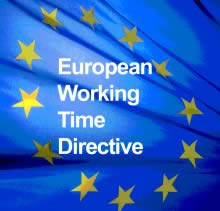Difference between Directive and Regulation
Key difference: Directives and regulations are two forms of laws that can be passed by the European Union. According to Europa, the official European Union website, a "directive is a legislative act that sets out a goal that all EU countries must achieve. However, it is up to the individual countries to decide how.” In terms of regulation, Europa says that “a regulation is a binding legislative act. It must be applied in its entirety across the EU.”
 Directives and regulations are two forms of laws that can be passed by the European Union. According to Europa, the official European Union website, a "directive is a legislative act that sets out a goal that all EU countries must achieve. However, it is up to the individual countries to decide how. This was the case with the working time directive, which stipulates that too much overtime work is illegal. The directive sets out minimum rest periods and a maximum number of working hours, but it is up to each country to devise its own laws on how to implement this.”
Directives and regulations are two forms of laws that can be passed by the European Union. According to Europa, the official European Union website, a "directive is a legislative act that sets out a goal that all EU countries must achieve. However, it is up to the individual countries to decide how. This was the case with the working time directive, which stipulates that too much overtime work is illegal. The directive sets out minimum rest periods and a maximum number of working hours, but it is up to each country to devise its own laws on how to implement this.”
An EU directive is more of an order, which is issued to establish a policy, to assign responsibilities, define objectives and/or delegate authority. A directive may establish or describe a policy, a program and/or an organization. The EU directive lists certain objectives that must be achieved in every Member State. The responsibility of achieving the objectives is in the hands of the national authorities, however, the manner in which they will achieve them is in their hands. In addition to the objectives, the EU directive will also list the date by which the said objectives must be completed.
The main use of a directive is to standardize different national rules and laws. An EU directive issued to all the Member States will ensure that all the Member States have the same guidelines while dealing with each other, especially relating to a single market, such as product safety standards.
The Federation of European National Collection Associations (FENCA) lists some of the characteristics of an EU directive:
- has to transform existing law up to a minimum level
- option for manoeuvres and interpretation
- there might be an exception for members of EU
- 2 steps mechanism:
- transformation in a given time
- if the country fails to apply the directive too long, application enters in life by force
 In terms of regulation, Europa says that “a regulation is a binding legislative act. It must be applied in its entirety across the EU. For example, when the EU wanted to protect the names of agricultural products coming from certain areas such as Parma ham, the Council adopted a regulation.”
In terms of regulation, Europa says that “a regulation is a binding legislative act. It must be applied in its entirety across the EU. For example, when the EU wanted to protect the names of agricultural products coming from certain areas such as Parma ham, the Council adopted a regulation.”
Whereas, a directive is more of an order listing objectives to be completed, a regulation is a rule, a law. It is a legal binding force that must be followed and abided in every Member State, similar to any other national law.
Europa further states that regulations differ from directives, in the manner that while directives are addressed to national authorities, who must then take action to make them part of national law, this is not the case with regulations. Regulations are law and the national governments do not have to take any actions themselves to implement EU regulations. The regulations must just be followed by every citizen like a law. Regulations may be passed by the European Commission, or jointly by the EU Council and European Parliament.
As per FENCA, some of the characteristics of an EU regulation are:
- no transposition
- minimum time to absorb
- no transformation
- can be in implementation up till 2 years
- "for and against everyone"
Image Courtesy: mitrefinch.co.uk, executiveboard.com









Add new comment